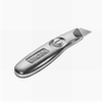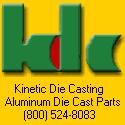World energy consumption increased by 60% during the last 26 years. Energy use in the U.S. increased by 81% during the same time period and continues to increase every year with new gadgets and appliances that require electricity to function. …
Continue reading
Tag Archives: Casting Metal
Zinc Alloys
Die Casting Zinc Alloys Quick Info. Die casting zinc alloys is a common practice amid metalworkers due to the fact that zinc alloys have several uses. 
Zinc has decent properties: it doesn’t rust, it is light yet durable, it’s non-corrosive, it is multipurpose, and it is easily flexible. Zinc may be shared with other materials such as aluminum, copper, magnesium, and tin, to state a couple. Their arrangements accomplish definite effects dependent on the quantities and types of materials used and the die casting process.
To die cast zinc metals, zinc and other alloys are joined via chemical developments and heated under high temperatures to become fluid. When they attain this molten state, they are forced to pour into die casts where they take on the mold’s design. Upon cooling, the metals keep the shape and stay that way until they are heated again. Here are some ways that zinc alloys are used:
• To coat metal items and guard them from corrosion
• To protect electrical pieces
• To form unbending metal components
• To substitute costly metalworking supplies
• To help as a lightweight alternative for some metal materials
Die casting zinc alloys are worthwhile in generating a lot of things, such as fixtures, vehicles, equipment, tools, weaponry, etc. It is chosen to other means of creating zinc alloys because die casts make it easier for the alloys to be shaped exactly in a little time. Also, it doesn’t take much exertion to pour molten alloy into the cast and let them set resolutely as matched to forging and hammering. Because of its various benefits, die casting zinc alloys has continued to be a extensive practice in metallurgy.
This is the blog on the Kinetic Die Casting Company web site. We make several types of Aluminum Handle Parts. Look at this website page for more details: www.kineticdiecasting.com/handle.html. Contact Kinetic Die Casting Company at 818-982-9200 or email us at sales@kineticdc.com. Use this webpage to request “die casting part prices” www.kineticdiecasting.com/replyform.html
Do you need fast delivery for military die casting parts? Kineticdc shipped military parts that were die castings with impregnation, chemical filmed and machined in less than two weeks from receipt of a purchase order. Know someone that wants to buy die cast parts and can use our die casting services?

Call us and let us know 818-982-9200.
Kinetic Die Casting Company 6918 Beck Avenue North Hollywood California 91605
www.kineticdc.com #diecasting #kineticdc #manufacturing @kineticdc #zinc
Kineticdc makes:
Automotive Die Casting Parts
Light Fixture Die Casting Parts
Consumer Products Aluminum Parts
Aerospace Die Casting Parts
Military Die Casting Parts
Tooling Facts
Zinc Die Casting Tooling Facts. Zinc die casting tooling is a technique to form molten zinc into a shape using molds called dies or die casts. The tooling is the mold utilized in the procedure, and it is largely composed of a cover and ejector. The zinc is melted into molten form and then powerfully emptied into the cover die with the container bearing the wanted pattern. The melted zinc settles on the mold and toughens. Later, it is removed through the ejector. Die casts for zinc can have added features such as trim casts, inserts and multiple cavities reliant on what needs to be formed.
There is a request for 
zinc die casting tooling because zinc has plenty of perfect characteristics:
Zinc die cast tooling is made of tough materials to safeguard that the liquefied zinc will be correctly shaped into the anticipated form. There are likely mistakes in die casting such as porosity, uneven zinc distribution, etc. A great zinc die caster will be extremely cautious in following the normal guidelines so that quality zinc items are manufactured.
This is the blog on the Kinetic Die Casting Company web site. We make several types of Aluminum Handle Parts. Look at this website page for more details: www.kineticdiecasting.com/handle.html. Contact Kinetic Die Casting Company at 818-982-9200 or email us at sales@kineticdc.com. Use this webpage to request “die casting part prices” www.kineticdiecasting.com/replyform.html
Differences Between Aluminum Die Casting and Zinc Die Casting
Differences Between Aluminum Die Casting and Zinc Die Casting. Aluminum and Zinc are two of the most commonly used alloys for die casting. Which is a better material between the two? There are different perspectives on which this question may be looked upon.
Zinc is the easiest metal to cast. Of all the most commonly used alloys for die casting, it has the lowest minimum section thickness at 0.63 mm. Aluminum, on the other hand, has a minimum section thickness of 0.89 mm.
Zinc die casting is therefore the more production friendly material.
Aluminum is lighter than zinc. The minimum draft of aluminum required for die casting is 1:100 while zinc has it at 1:200. Zinc’s density is at 6.6 gms/cubic cm while aluminum’s is 2.74 gms/cubic cm. Because of it, aluminum die casting can produce more castings per ton of metal than zinc die casting, in spite of the latter being the easier to cast.
Zinc alloy is tougher than aluminum and any other types, especially in terms of impact strength. Due to zinc die casting being more pressure tight than aluminum die casting, zinc is better in terms of waterproofing capability. Products made from aluminum-based alloys are most likely to leak when subjected to waterproofing tests and actual conditions.
Zinc melts easier than aluminum. Aluminum melts at 1,221 degrees Fahrenheit while zinc melts at 787.2 degrees Fahrenheit. In terms of heat resistance, aluminum will appear to be better than zinc. However, in terms of cost-effectiveness, this data only means that because zinc melts easily than aluminum, it can be cast easier using a less costly method called “Hot Chamber”. Aluminum die casting, on the other hand, uses a more costly and slower method of casting called “Cold Chamber”.
Overall, both materials have their respective advantages and disadvantages. This is the beauty of having more than one option for die casting. The ultimate beneficiary of this diversity is not necessarily the industries involved in this process, but the consumers.
This is the blog on the Kinetic Die Casting Company web site and talks about the various Aluminum Parts Manufacturing. Look at this website page for more details: http://kineticdiecasting.blogspot.com/. Contact Kinetic Die Casting Company at 818-982-9200 or email us at sales@kineticdc.com. Use this webpage to request “die casting part prices” www.kineticdiecasting.com/replyform.html
Classification of Porosity in Die Casting Parts
Classification of Porosity in Die Castings. Porosity in casting aluminum alloys directly affects the reliability and quality of products which incorporating die cast metals into their design. Die Casting Manufacturing companies rely on advanced technologies and methodologies to minimize porosity so as to avoid additional overhead.
The types of porosity in die castings vary in terms of their characteristics. The three basic classifications however are continuous, blind and totally enclosed, which are manifested in four general types namely micro, micro/macro, funnel and macro.
Continuous Porosity
The first instance of continuous porosity in metal castings is the presence of leak path from a particular enclosed section towards another. The Micro Manifestation shows a slow single-point leak.
The second instance of continuous porosity is the presence of collective defects which are interconnected in many areas. The Micro/Macro Manifestation of such characteristic is multiple leak points at a slow rate.
The third instance of continuous porosity is the presence of externally visible defects with micro-sectional defects. The Funnel Manifestation is a slow single-point leak.
The fourth instance of continuous porosity is the gross visible defects in the surface of metal castings, shows extreme leaking in the Macro level.
Blind Porosity
The first circumstance is the absence of visible defects on the surface of die cast metals while micro manifestation displays a weeping of contaminants towards the surface. A wet or darkened region is also visible. On the other hand, the said casting holds pressure.
The second circumstance is the absence of visible imperfections on the surface. There are however darkened parts of the casting surface. The Micro/Macro Manifestations include gushing of machining fluid towards the surface. The castings on this instance still hold pressure.
The third circumstance is the visible die cast porosity and pitting on the surface. The Funnel Manifestation includes discoloration of the surface and weeping of machining liquids.
The fourth circumstance of blind porosity is the display of visible porosity holes on the surface of the metals and the roughness of the said surface. The Macro Manifestation includes surface discoloration and the presence of contaminants.
Totally Enclosed Porosity
Defects and impurities are not visible on the surface which is often caused by material shrinkage or gas accumulation. Shrink porosity is characterized by irregular shape and rough surface. Gas porosity is displays a smooth and regular shaped castings.
Like
Kinetic Die Casting Company on FaceBook
![]()
Steps in Die Casting
Steps in Die Casting. What is Die Casting? How are die cast parts made?
Die Casting is a process which involves the filling of liquefied metals onto a mold cavity under a certain degree of pressure. The metals are ejected from the mold once they are solidified. This process is used by many companies in supplying the growing demand for precision metals.
The mass production of molded metal parts is preferred by most metal fabricators and electronics manufacturers because high volume products are made in less than no time. Also, the parts are manufactured with precise dimensions.
The stages of producing die cast metals go in a cycle. Die casting manufacturing companies generally apply the following steps in molding metals.
To start with, the mold is attached to the machine, usually a set of two-halves die, so that a hollow interior can hold a liquefied metal substance when they are put together.
Step 1
The machine mechanically separates the die casting mold in two parts, exposing its hollow interiors. It shall contain nothing if the machine has not yet commenced the production process. If it is in the middle of the production, it shall contain a hardened metal.
Step 2
A lubricant is sprayed onto the interiors of the mold. If it is in the middle of the production process, the hardened metal part must first be removed. The two half molds are then put back together.
Step 3
Through a heat resistant ladle, the aluminum substance is automatically poured into a shot cylinder.
Step 4
The substance is then ejected into the mold under a required degree of pressure, where it is allowed to harden.
Step 5
Once the liquid substance transforms to its solid form, taking the shape of the mold, the machine automatically separates the two half molds. The metal part is released and the cycle starts again.
This is the blog on the Kinetic Die Casting Company web site. KDC also writes about Die Casting Draft Angle. Look at this website page for more details: www.kineticdiecasting.com/draft.html. Contact Kinetic Die Casting Company at 818-982-9200 or email us at sales@kineticdc.com. Use this webpage to request “die casting part prices” www.kineticdiecasting.com/replyform.html

